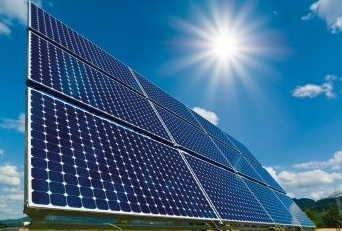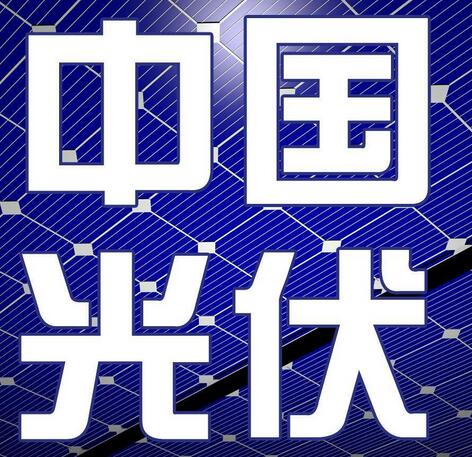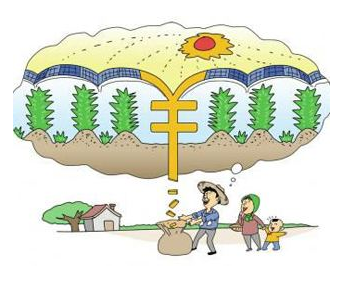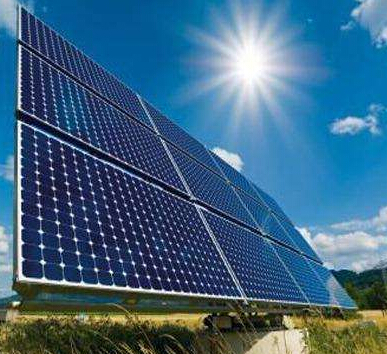As the construction speed of ground power stations slows down, photovoltaic applications have also entered a new normal: photovoltaic building integration. Recently, the first domestic building photovoltaic integration project jointly established by the National Energy Group and a certain group was officially completed. In the eyes of many industry insiders, this also means that the PV application system “from energy consumers to energy producers” is getting closer and closer to us.

According to the relevant data of the Ministry of Housing and Urban-Rural Development, China's building energy consumption accounts for about 30% of the total energy consumption of the whole society. How to make the photovoltaic industry and green building deep integration has become a new idea of transformation and upgrading, energy saving and emission reduction in the traditional construction industry. As the first energy-saving photovoltaic wall pilot project of the National Energy Group, at the beginning of the construction, it will take the lead in arranging green technologies such as new energy systems, and strive to create a livable ecosystem of the Internet of Things. After the project is completed, the annual power generation capacity is 123,000 kWh, which can meet the electricity demand of more than 10% of the building. The power generation ratio is far greater than the national standard.
As a wall, it not only has the functions of sheltering from wind, rain, heat insulation, load bearing, etc., but also becomes a form of distributed energy. Simply put, the solar photovoltaic grid is installed on the outer surface of the building's enclosure to provide electricity. While photovoltaic building integration has the advantages of green energy conservation and improved power efficiency, it also reduces atmospheric and solid waste pollution emissions to a certain extent.
As Ling Wen, an academician of the Chinese Academy of Engineering, said, “The solar cell itself is a wall, but it can generate electricity.” Thin-film photovoltaic modules are used as exterior decorative curtain walls. Through the background big data analysis, the new energy power generation system can be rationally allocated to maximize energy generation efficiency and effectively use energy. Combined with photovoltaic thermal solar energy comprehensive utilization technology, photovoltaic curtain wall quick assembly technology, big data and cloud platform, the urban buildings that used to consume energy can also become energy producers.
By using coating technology to directly "long" the material on the glass, the production cost can be greatly reduced. At the same time, the distributed power generation mode of “spontaneous use, surplus electricity access, and efficient use” is superimposed, which effectively avoids the problem that the ground power station occupies a large area and the energy storage equipment is expensive. At the bottom and top of the curtain wall, a ventilation louver and a cavity heat extraction system are designed, and an air source heat pump is combined to collect and heat the hot air in the cavity to provide domestic hot water, thereby realizing comprehensive utilization of thermal efficiency. The battery can be customized to produce different color and pattern components to meet the architectural aesthetics of color, specifications and other requirements. The project uses a total of 2037 CIGS PV modules with a total installed capacity of 200 kW.
According to the Medium and Long-term Development Plan for Renewable Energy, by 2020, 20,000 rooftop photovoltaic power generation projects will be built nationwide with a total capacity of 1 million kilowatts. During the “Thirteenth Five-Year Plan” period, the applicable area of photovoltaic building integration in China's cities will reach 1.79 billion square meters, and the installed capacity of new PV building applications in cities will be over 10 million kilowatts. To achieve the goal of 2 billion square meters, the new building will exceed 2 billion square meters. At the same time, it is necessary to go to the urban area to the park, from the monomer to the area, which is also the multiplication plan of green building. According to the calculation of 1kW photovoltaic system installed every 20 square meters, the maximum installed capacity of building photovoltaics in 2020 can reach 300 million kW.
After the six ministries have further clarified the application direction of smart photovoltaic buildings, the market growth rate in this field will exceed 100 billion yuan in the future. Domestic institutions predict that by 2020, 20,000 rooftop photovoltaic power generation projects will be built nationwide with a total capacity of 1 million kilowatts. There is no doubt that the market will be further released in the next three years. In particular, “office buildings and commercial centers are more willing to use photovoltaic building integration because of higher electricity consumption and higher electricity prices, and the industry is expected to take the lead in making breakthroughs in this field.”
















 RCCN WeChat QrCode
RCCN WeChat QrCode Mobile WebSite
Mobile WebSite







